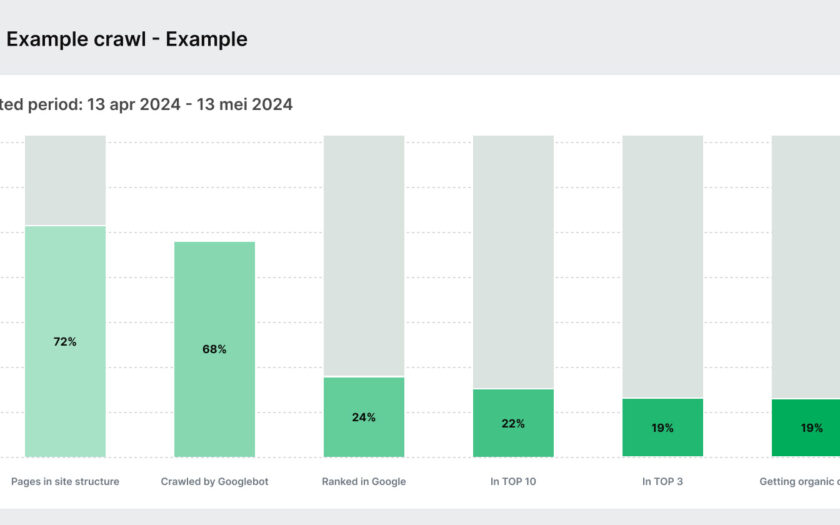Reduce the number and size of the resources required to display initial content.
Minify JavaScript files to reduce their load time.
Prioritize loading of above-the-fold content to speed up page render times.
If you’re dealing with Single Page Applications (SPAs), which rely on JavaScript for dynamic content loading, then you might need to fix:
Indexing Issues: Since content is loaded dynamically, search engines might see a blank page. Implement Server-Side Rendering (SSR) to ensure content is visible to search engines upon page load.
Navigation Problems: Traditional link-based navigation is often absent in SPAs, affecting how search engines understand site structure. Use the HTML5 History API to maintain traditional navigation functionality and improve crawlability.
Dynamic rendering is another technique useful for JavaScript-heavy sites, serving static HTML versions to search engines while presenting interactive versions to users.
However, ensure the browser console shows no errors, confirming the page is fully rendered with all necessary content. Also, verify that pages load quickly, ideally under a couple of seconds or so, to prevent user frustration (nobody likes a prolonged loading spinner) and reduce bounce rates.
Employ tools like GSC and Lighthouse to test and monitor your site’s rendering and web vitals performance. Regularly check that the rendered content matches what users see to ensure consistency in what search engines index.
4. Optimizing For Seasonal Trends
In the retail eCommerce space, seasonal trends influence consumer behavior and, consequently, search queries.
So, for these projects, you must routinely adapt your SEO strategies to stay on par with any product line updates.
Seasonal product variations—such as holiday-specific items or summer/winter editions—require special attention to ensure they are visible at the right times:
Timely Content Updates: Update product descriptions, meta tags, and content with seasonal keywords well before the season begins.
Seasonal Landing Pages: Create and optimize dedicated landing pages for seasonal products, ensuring they link appropriately to main product categories.
Ongoing Keyword Research: Continually perform keyword research to capture evolving consumer interests and optimize new product categories accordingly.
Technical SEO: Regularly check for crawl errors, ensure fast load times, and confirm that new pages are mobile-friendly and accessible.
On the flip side, managing discontinued products or outdated pages is just as crucial in maintaining site quality and retaining SEO value:
Evaluate Page Value: Conduct regular content audits to assess whether a page still holds value. If a page hasn’t received any traffic or a bot hit in the last half-year, it might not be worth keeping.
301 Redirects: Use 301 redirects to transfer SEO value from outdated pages to relevant existing content.
Prune Content: Remove or consolidate underperforming content to focus authority on more impactful pages, enhancing site structure and UX.
Informative Out-of-Stock Pages: Keep pages for seasonally unavailable products informative, providing availability dates or links to related products.
Put simply, optimizing for seasonal trends means preparing for high-traffic periods and effectively managing the transition periods. This supports sustained SEO performance and a streamlined site experience for your clients.
5. Structured Data And Schema Implementation
Structured data via schema.org markup is a powerful tool to enhance a site’s SERP visibility and boost CTR through rich snippets.
Advanced schema markup goes beyond basic implementation, allowing you to present more detailed and specific information in SERPs. Consider these schema markups in your next client campaign:
Nested Schema: Utilize nested schema objects to provide more detailed information. For example, a Product schema can include nested Offer and Review schemas to display prices and reviews in search results.
Event Schema: For clients promoting events, implementing an Event schema with nested attributes like startDate, endDate, location, and offers can help in displaying rich snippets that show event details directly in SERPs.
FAQ and How-To Pages: Implement FAQPage and HowTo schemas on relevant pages to provide direct answers in search results.
Ratings, Reviews, and Prices: Implement the AggregateRating and Review schema on product pages to display star ratings and reviews. Use the Offer schema to specify pricing information, making the listings more attractive to potential buyers.
Availability Status: Use the ItemAvailability schema to display stock status, which can increase the urgency and likelihood of a purchase from SERPs.
Blog Enhancements: For content-heavy sites, use Article schema with properties like headline, author, and datePublished to enhance the display of blog articles.
Use Google’s Structured Data Testing Tool tool to test your pages’ structured data and identify any errors/warnings in your schema implementation. Also, use Google’s Rich Results Test to get feedback on how your page may appear in SERPs with the implemented structured data.
Conclusion
Considering their long SEO history and legacy, enterprise-level websites require more profound analysis from different perspectives.
We hope this mini checklist serves as a starting point for your team to take a fresh look into your new and existing customers and help deliver great SEO results.
Image Credits
Featured Image: Image by JetOctopus. Used with permission.
In-Post Images: Image by JetOctopus. Used with permission.
